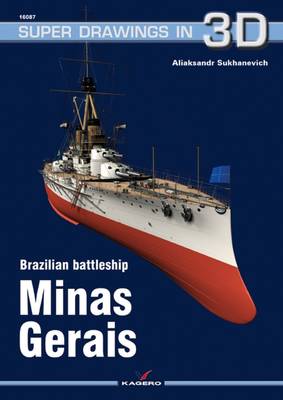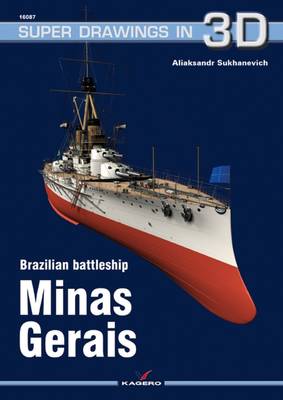
- Afhalen na 1 uur in een winkel met voorraad
- Gratis thuislevering in België vanaf € 30
- Ruim aanbod met 7 miljoen producten
- Afhalen na 1 uur in een winkel met voorraad
- Gratis thuislevering in België vanaf € 30
- Ruim aanbod met 7 miljoen producten
Zoeken
Omschrijving
In 1904, the Brazilian Congress approved a fleet renewal program involving the construction of 28 ships of various classes, including 3 battleships. The implementation of the program, which was the work of the Minister of the Navy, Admiral Julio Cesar de Noronha, was to restore Brazil to the position of the main maritime power of the continent. The loan for the expansion of the fleet was guaranteed by the British Rothschild bank, which determined the place where the order was put. Initial talks with British shipyards began in 1903. Already in November this year, the English presented a project of a battleship with a displacement of 13,000 tons and a speed of 19 knots. The design of the new Brazilian ships was based on the modified plans of the Norwegian coastal defense battleship "Norge" and the British battleship "Swiftsure", commissioned by Chile (eventually transferred to the Royal Navy). The main difference from the prototype was the layout and composition of the main caliber artillery: 12 254 mm guns in 6 turrets. On July 3, 1906, a contract was signed with Armstrong to build 3 battleships that were to be named: "Rio de Janeiro", "Minas Gerais", and "São Paulo." The pace of building new Brazilian ships turned out to be very slow. The newly appointed sales director of Armstrong, Eustace Tennyson Deyncourt, who urged the Brazilians to obstruct because he already knew the characteristics of the English-built Dreadnought, probably had his fingers in it.
Specificaties
Betrokkenen
- Auteur(s):
- Uitgeverij:
Inhoud
- Aantal bladzijden:
- 72
- Taal:
- Engels
- Reeks:
Eigenschappen
- Productcode (EAN):
- 9788367294157
- Verschijningsdatum:
- 1/04/2026
- Uitvoering:
- Paperback
- Formaat:
- Trade paperback (VS)
- Afmetingen:
- 211 mm x 297 mm

Alleen bij Standaard Boekhandel
+ 87 punten op je klantenkaart van Standaard Boekhandel
Beoordelingen
We publiceren alleen reviews die voldoen aan de voorwaarden voor reviews. Bekijk onze voorwaarden voor reviews.











